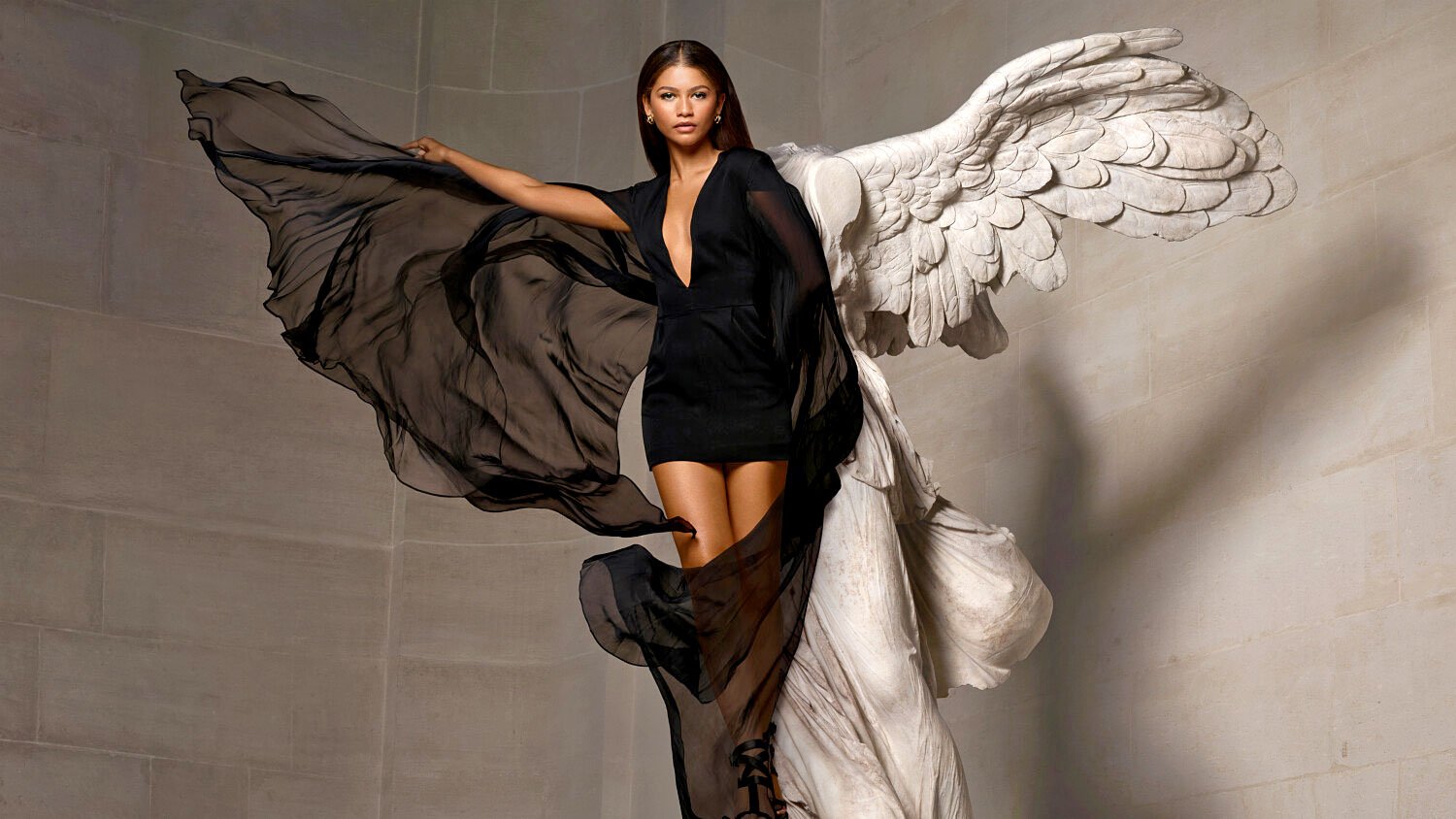
The Louvre Museum and Lancôme have joined forces in a unique collaboration. The beauty behemoth has released a skincare and makeup collection inspired by nine of the museum’s most celebrated sculptures.
The campaign, photographed on-site by Sølve Sundsbø, features four of the brand’s ambassadors—Zendaya, Aya Nakamura, Amanda Seyfried, and He Cong—as they take the forms and embody the myths of the iconic statues. The collaboration reimagines how the great works may have looked at the time of their making millennia ago, using modern heroines.
For her part, Zendaya completes the fragmented Winged Victory of Samothrace, one of few surviving statues from the ancient Hellenistic period. Representing the Greek goddess Nike (Victory), Winged Victory has been exhibited at the top of the central staircase of the Louvre since 1884, when it was discovered on the island of Samothrace in the Aegean Sea.
He Cong and the Venus de Milo. © Sølve Sundsbø. Courtesy of the Louvre Museum.
Venus de Milo, another Hellenistic Greek sculpture with missing parts, is reincarnated by Chinese fashion model He Cong. Since its rediscovery on the island of Milos in 1820, the statue has been prominently displayed at the Louvre, where it has become one of art history’s greatest treasures and a must-see for generations.
Aya Nakamura and Corine. © Sølve Sundsbø. Courtesy of the Louvre Museum.
The French singer Aya Nakamura—who hails from a family of West African griots, poets who keep the oral tradition of Mali—inhabits Corine. The marble bust was crafted by French sculptor Edme-François-Étienne Gois in 1836 to depict the Greek poetess who lived in the 6th to 5th century B.C.E.
Other reimagined classics from the Louvre collections include Diana of Gabii (4th century B.C.E.), Nymph with a Scorpion (ca. 200–100 B.C.E.), Echo, Hygeia (ca. 2nd century C.E.), Venus of Arles (ca. 1st century B.C.E.), and Sleeping Hermaphroditus (1620).
Amanda Seyfried and Diana of Gabii. © Sølve Sundsbø. Courtesy of the Louvre Museum.
The debut collaboration highlights “the diversity of forms of beauty found in the Louvre collections—a dialogue between cultures and civilizations that transcends time and geography,” said Laurence des Cars, President-Director of the museum. “The history of art and beauty, the ‘making’ of beauty, the quest for beauty, are intimately linked.”
She added, “Pop culture—the culture of moving images, advertising, social media and our daily lives—is often inspired by these timeless images and representations. The Musée du Louvre collections are surprising and captivating in their ability to provide a reading and an understanding of how these canons transform, how they can be interpreted, and how they evolve.”